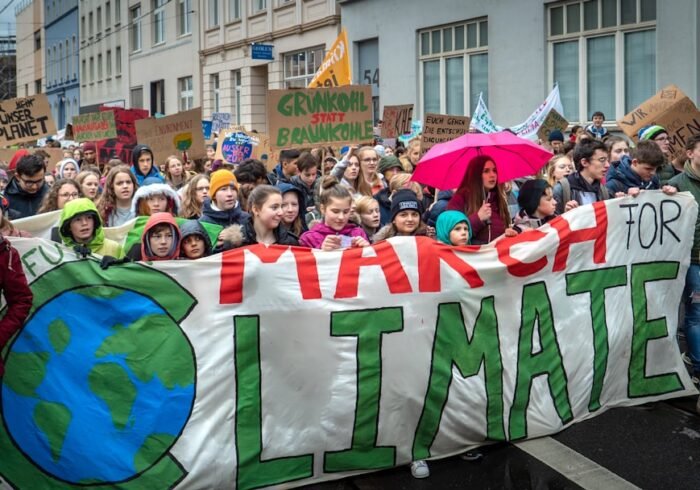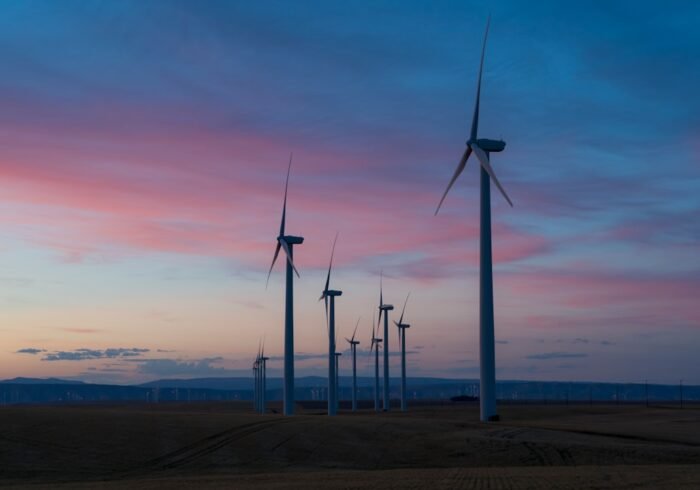The Environmental Impact of Air Travel: A Complete Overview Air travel has transformed global connectivity by enabling people to reach far-flung locations in a matter of hours. With millions of passengers traveling daily, the aviation sector has experienced exponential growth in recent decades. However, there is a substantial environmental cost associated with this convenience.
Key Takeaways
- Air travel contributes significantly to carbon emissions, impacting the environment.
- Factors affecting carbon emissions from air travel include aircraft type, flight distance, and passenger load.
- Efforts to reduce carbon emissions from airplanes include technological advancements and operational improvements.
- Alternative fuels, such as biofuels, play a crucial role in reducing carbon emissions from air travel.
- Balancing the benefits and costs of air travel requires individual actions to offset carbon emissions and sustainable practices.
A significant amount of carbon dioxide (CO2) and other greenhouse gases are released into the atmosphere when fossil fuels are burned in airplane engines, which contributes to climate change. Given the pressing need to address environmental issues worldwide, the aviation industry is coming under more and more scrutiny for its carbon footprint. There is a complicated connection between carbon emissions and air travel. Although air travel promotes cultural exchange & economic growth, it also presents a problem for sustainability initiatives. About 2-3 percent of the world’s CO2 emissions are caused by the aviation sector, and this percentage is predicted to increase as air travel grows.
Developing strategies to lessen these emissions’ environmental impact requires an understanding of their implications. Beyond the immediate release of CO2, airplane carbon emissions have additional negative effects on the environment. Global warming may be made worse by a variety of atmospheric changes caused by aircraft emissions.
For example, cirrus clouds and contrails, which trap heat in the atmosphere, can form as a result of high-altitude emissions of nitrogen oxides and water vapor. The warming effect of CO2 alone can be greatly enhanced by this phenomenon, which is referred to as radiative forcing. Also, carbon emissions are not the only effect of the aviation industry. Particulate matter and other contaminants that can harm human health and air quality are also released by airplanes. Airport communities frequently have higher levels of air pollutants and noise pollution, which has a negative impact on the health of the local population. The need for airlines to be more accountable and transparent about their environmental practices is growing as more people become aware of these problems.
| Flight Distance | Carbon Emissions |
|---|---|
| Short-haul (up to 1,500 km) | 0.15 kg CO2 per passenger km |
| Medium-haul (1,500 – 4,000 km) | 0.18 kg CO2 per passenger km |
| Long-haul (over 4,000 km) | 0.22 kg CO2 per passenger km |
There are a number of factors that affect the carbon emissions linked to air travel. An important factor is the kind of aircraft that is utilized. Because of improvements in design and technology, newer models typically use less fuel than older ones. By investing in contemporary fleets, airlines can lower their emissions per passenger mile and become more ecologically friendly choices.
Determining emissions levels also heavily depends on flight paths & operational procedures. Since takeoff and landing require a lot of energy, short-haul flights typically have a higher carbon footprint per passenger than long-haul flights. Also, weather, delays in air traffic control, and flight patterns can all have an impact on emissions & fuel consumption.
In order to maximize their operations & reduce their environmental impact, airlines must have a thorough understanding of these factors. The aviation sector has launched a number of initiatives to lower carbon emissions in response to growing concerns about climate change. The IATA’s (International Air Transport Association) pledge to achieve net-zero carbon emissions by 2050 is one noteworthy initiative. This audacious objective demonstrates a shared understanding of the industry’s need for sustainable practices. Also, airlines are investigating operational enhancements that may result in lower fuel usage.
These include employing more effective ground operations, streamlining flight routes, & spending money on cutting-edge air traffic control systems. To improve fuel efficiency, many airlines are also implementing weight reduction techniques, which involve removing extraneous items from aircraft. While preserving operational efficacy, these initiatives show a proactive approach to addressing environmental concerns. A viable way to lower aviation’s carbon emissions is through the use of alternative fuels.
The carbon footprint of air travel could be considerably reduced by using sustainable aviation fuels (SAFs), which are made from renewable resources like waste products or plant materials. Compared to conventional jet fuels, SAFs can cut lifecycle greenhouse gas emissions by up to 80% when produced sustainably. Since many airlines have already started using SAFs in their operations, the industry’s adoption of these fuels is picking up speed.
But there are still issues with increasing production and guaranteeing affordability. Investing in R&D is essential to developing SAF technology and making it a practical choice for broad application. The possibility of significant carbon emission reductions becomes more feasible as more airlines pledge to use alternative fuels.
A greater focus on sustainability and continuous technological advancements will probably influence air travel in the future. Innovations like hybrid and electric aircraft are being investigated as possible game-changers in the fight against emissions. Despite being in their early stages, these technologies have the potential to revolutionize the aviation industry in the ensuing decades. In determining how air travel develops in the future and how it affects the environment, regulatory frameworks will also be crucial. In an effort to encourage airlines to adopt more environmentally friendly practices, governments worldwide are starting to impose stricter emissions regulations on them.
Customers are calling for more environmentally friendly travel options as a result of growing public awareness of climate change. The industry’s transition to greener practices may be accelerated by this change in consumer inclination. Individual travelers can help lessen their environmental impact, even though systemic changes within the aviation industry are crucial for lowering carbon emissions.
Initiatives for renewable energy or reforestation that help reduce overall emissions may be part of these projects.
Also, when organizing their travels, travelers can make thoughtful decisions. If at all possible, choose direct flights to reduce emissions from layovers and extra takeoffs and landings. Choosing airlines that put sustainability first and make investments in fuel-efficient technology can also help reduce carbon footprints. Individuals can help ensure that air travel is more sustainable in the future by being thoughtful about their travel decisions.
It is critical to acknowledge both the advantages and environmental costs of air travel as it continues to bring people together globally. The aviation sector must acknowledge its substantial role in carbon emissions and climate change, even though it is essential for promoting economic expansion and cross-cultural interaction. In order to reduce their environmental impact, airlines can adopt sustainable practices, alternative fuels, & cutting-edge technologies. Finally, cooperation between governments, industry stakeholders, and individual travelers is necessary to strike a balance between the environmental effects of air travel and its convenience.
Action in the aviation industry is becoming more and more necessary as climate change awareness rises. By putting sustainability first and making wise decisions, society can create the conditions for a time when air travel is still essential to daily life while having the least negative effects on the environment.
According to a recent study by the International Council on Clean Transportation, airplanes contribute significantly to carbon emissions, with estimates suggesting that they are responsible for around 2.5% of global carbon emissions. This highlights the urgent need for sustainable aviation practices to mitigate the environmental impact of air travel. To learn more about reducing your carbon footprint and making a big impact on the environment, check out this insightful article on easy ways to make a big impact.



